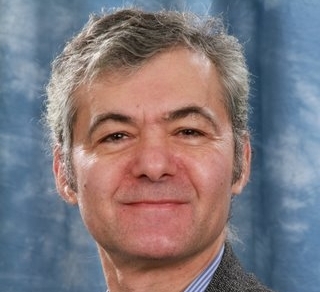

Dimitri Kanevsky is being recognized as a Champion of Change for leading education and employment efforts in science, technology, engineering and math for Americans with disabilities.
I’m honored to work in the field of technology and to be included as a White House Champion of Change.
Technology is the great equalizer that can dramatically improve the quality of a person’s life through the click of a mouse button. Technology is constantly evolving to remove barriers that emerge due to a person’s social characteristics, geographic location, physical or sensory abilities.
There are many examples of how technology is leveling the playing field and opening up doors for all citizens. For example, communication technologies allow people to work from home, making mobility disabilities less relevant. Development in transcription technologies makes it possible for people who have hearing loss to participate in meetings in the workplace and advance their education more easily.
These types of technologies are important to me. I’ve had the opportunity to witness technological developments that help people with various forms of disabilities, specifically relating to hearing loss, since I myself lost my hearing when I was 3 years old. While my main task has been to develop mainstream technologies, I am always exploring how to apply novel technologies to help people with disabilities.
I’m a mathematician by education and profession. I received a Ph.D. in mathematics at Moscow University and for many years worked on such abstract mathematical problems as number theory and algebraic geometry in various academic centers such as the Weitzman Institute of Science in Israel, the Max Plank Institute of Mathematics in Germany, and the Institute for Advanced Studies at Princeton University.
Innovation
At the same time, I was looking for what technologies could be used or developed to improve communication for people with hearing loss. My first innovation in this area was the development of a multi-channel tactile device that sends vibration signals to the skin. This first of a kind device helps people with total hearing loss obtain acoustic information through a different modality.
Many opportunities emerged for me to develop and implement new technologies that benefit people with disabilities when I came to work at the T. J. Watson Research Center at IBM in 1986) This research laboratory is a place where great minds come together from all over the world to develop ground breaking technologies.
While at IBM I have developed and invented various technologies and applications such as speech and translation recognition technologies, biometrics, security systems, smart electronics for cars, and nano systems.
Artificial Passenger
One application that I am particularly proud of is the Artificial Passenger. It’s a tool that uses speech recognition to engage drivers in dialogue and therefore help prevent drivers from falling asleep at the wheel.
My primary research has been in the domain of speech recognition but I have also:
- developed some of the first applications that use speech recognition as a communication aid for deaf telephone users.
- helped apply speech transcription technologies in the educational arena through the Liberated Learning Consortium, which now has 20 universities worldwide using transcription technologies for more accessible university education.
- worked to develop applications of electronic headsets that display transcription of what is being spoken.
- helped to port speech recognition to wearable portable devices so that transcribed speech could be more easily and naturally displayed for deaf users in face-to-face meetings.
Voice-Based Services
Sometimes I found that significant impact was possible by just combining existing technologies. Together with Tim Walls at IBM, I suggested using conference call facilities by relay services for people with hearing loss. This led to the creation of voice-based TTY that allowed a deaf user to speak directly to another caller without requiring voice over from the TTY operator if the deaf user preferred to speak for him/herself.
This system has since been adopted by many relay services in the US. In the early days of the Internet, I suggested and implemented steno transcription services over the internet; a service that is now used by many people at IBM and in other companies and universities.
The business world is a very competitive place, so many challenges still remain. It is important that business and governments continue to focus attention on a person's strengths and talents rather than on their so called disabilities, and encourage a spirit of teamwork, rather than competition.
I am honored to use my experience and technology knowledge to help improve the lives of people worldwide.
Dr. Dimitri Kanevsky is a research staff member in the Speech and Language Algorithms Department at the IBM T.J.Watson Research Center.


